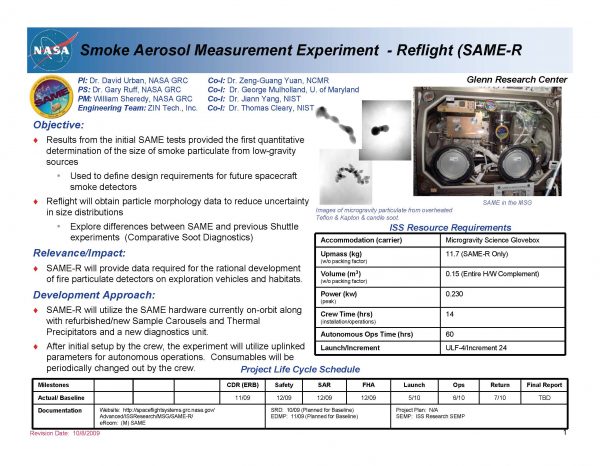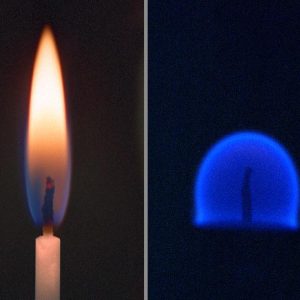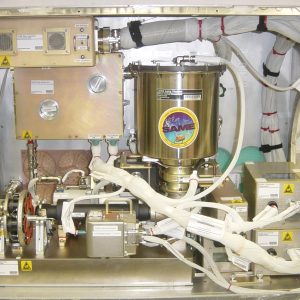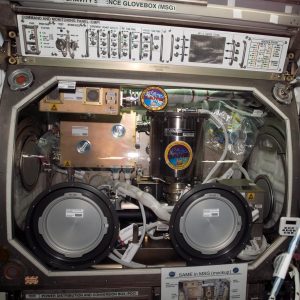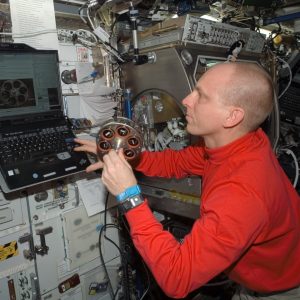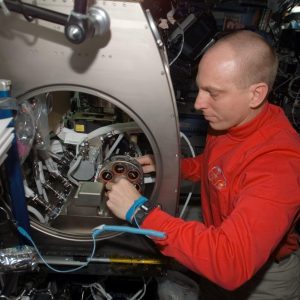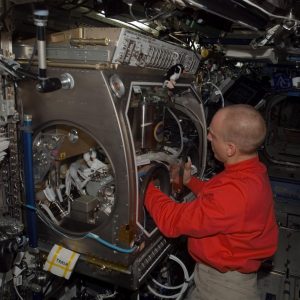SAME-R
Smoke Aerosol Measurement Experiment-Reflight (SAME-R)
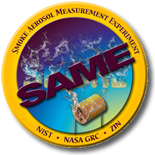
The Re-flight of the Smoke Aerosol Measurement Experiment (SAME-2) was conducted during Expedition 24 (July – September 2010) and flight experiment results have been analyzed with respect to comparable ground-based experiment results. The ground tests included a reference instrument for measuring particle size distributions of the smoke from SAME-2 materials (Teflon, Kapton , cotton, silicone rubber and Pyrell ). Repeatable sample surface temperatures were obtained with SAME engineering hardware and measurements were taken with returned flight diagnostic equipment consisting of a thermal precipitator for collecting smoke particles for Transmission Electron Microscopy (TEM), several aerosol instruments, and a commercial smoke detector. These flight units measured moments of the particle size distribution: particle number concentration (zeroth moment), the diameter concentration (first moment), and the mass concentration (third moment). The count mean diameter of the smoke particles and the diameter of average mass can be calculated from moment averages. Furthermore, the geometric mean diameter and geometric standard deviations can be calculated if the particle size distribution is assumed to be lognormal. The flight system also included International Space Station and Space Shuttle smoke detectors and the results from these devices are presented. A Scanning Mobility Particle Sizer Spectrometer (SMPS) is too large and complex to include in a flight experiment, but its use in ground-based testing determined whether the lognormal assumptions were valid, and provided high-resolution particle size distributions of the smoke from each material. SMPS particle size distributions from ground experiments were compared to particle statistics generated by moment calculations and particle size distributions from microscopic analysis of TEM images of particles from both ground and flight experiment results for both un-aged and aged smoke.
Background/Overview
Smoke is a general term that encompasses aerosol materials produced by a number of processes. In particular it can include unburned, re-condensed, original polymer or pyrolysis products that can be either liquid or solid, hydrocarbon soot, condensed water vapor, and ash particles. Soot particles dominate the smoke particulate in established flaming fires while unburned pyrolysis products and re-condensed polymer fragments are produced by smoldering and pyrolysis in the early stage of fire growth. Given the constrained space on any spacecraft, the target for the fire detection system is necessarily the early phase and not established flaming fires; consequently, the primary target for detection is pyrolysis products rather than soot.
Prior spacecraft systems are summarized in more detail in papers by Friedman and Urban. In the Mercury, Gemini and Apollo missions, the crew quarters were limited and mission durations were short; consequently, it was considered reasonable that the astronauts would rapidly detect any fire. The Skylab module, however, included approximately 30 UV-sensing fire detectors. These devices were limited to line-of-sight and were reported to have difficulties with false alarms. The Space Shuttle Detectors were based upon ionization fire detector technology, the most advanced technology available at the time and used an inertial separator designed to eliminate particles larger than 1-2 µm. The International Space Station (ISS) smoke detectors use near-IR forward scattering, rendering them most sensitive to particles larger than 1 µm, outside of the range of sensitivity of the shuttle detector. As described by Friedman, there have been six component failures by overheating or other causes in the NASA Orbiter fleet in addition to several similar incidents that have occurred on the ISS. None of these events spread into a real fire but as mission durations increase, the likelihood of failures increases. The experience on Mir in 1997 has shown that failure of oxygen generation systems can have significant consequences. As a result, improved understanding of spacecraft fire detection is critically needed.
Gallery
Contact Information
Principal Investigator(s)
-
- David L Urban, Ph.D., Glenn Research Center, Cleveland, Ohio, United States
Co-Investigator(s)/Collaborator(s)
-
- Zeng-guang Yuan, Glenn Research Center, Cleveland, Ohio, United States
- Jiann Yang, National Institute for Standards and Technology, Gaithersburg, Maryland, United States
- Thomas Cleary, National Institute of Standards and Technology, Gaithersburg, Maryland, United States
- George Mulholland, University of Maryland, College Park, Maryland, United States

